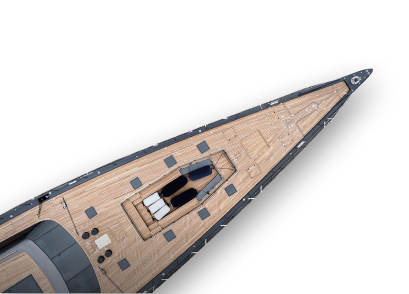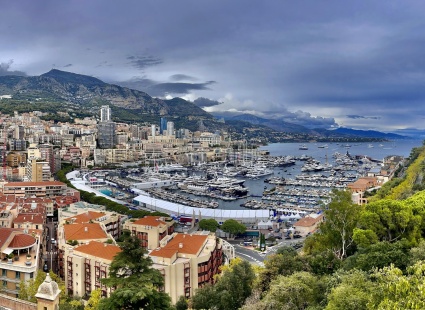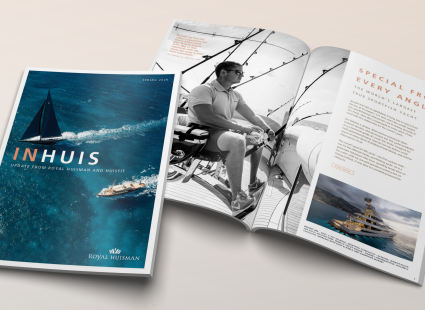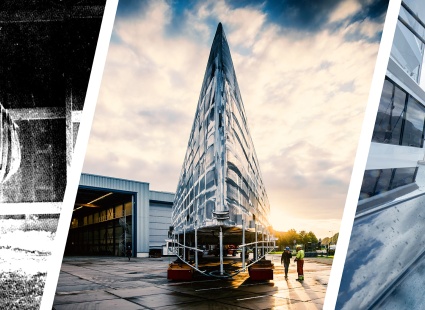THE ADMIRAL’S CUPPERS
This title is a “catch-all” for the many yachts built by Huisman to compete in the British Admiral’s Cup, the US Onion Patch...
…and SORC series, the Sardinia Cup, the Australian Southern Cross Series and all the various qualifying events under the International Off shore Rule (IOR). To participate at this level represented the pinnacle of racing achievement, but there were also many opportunities for an exciting and satisfying season’s racing by participating in the individual races that contributed to team selection, or that formed part of the team event. For example, you could compete in the Newport–Bermuda Race or the Fastnet Race even if you were not doing so as part of a national team. The characters who owned Huisman-built yachts, therefore, had many opportunities to get to know one another as fierce or friendly rivals even if their home racing waters were as far-flung as the Baltic, the Southern Ocean and the formidable Gulf Stream off the east coast of Florida.
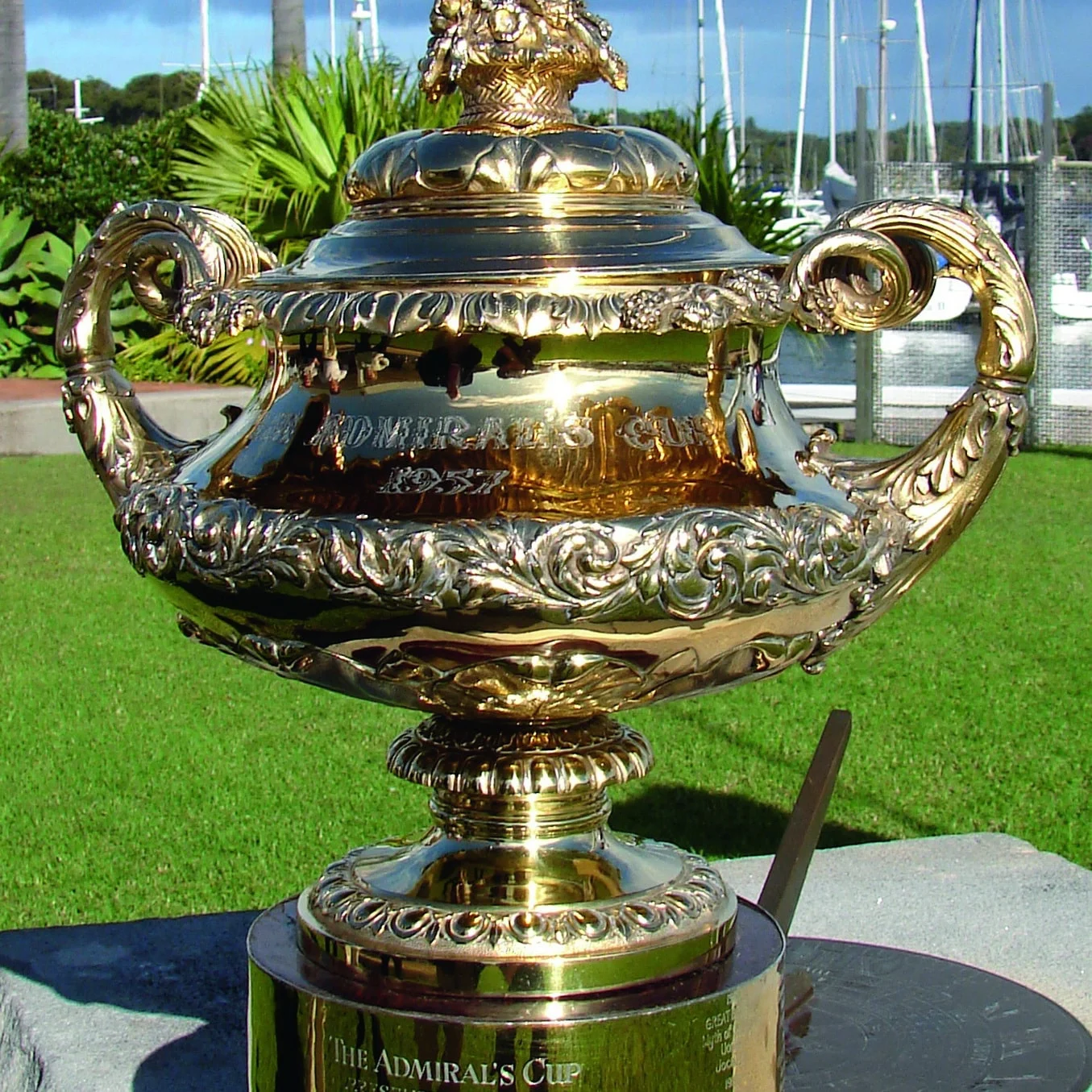
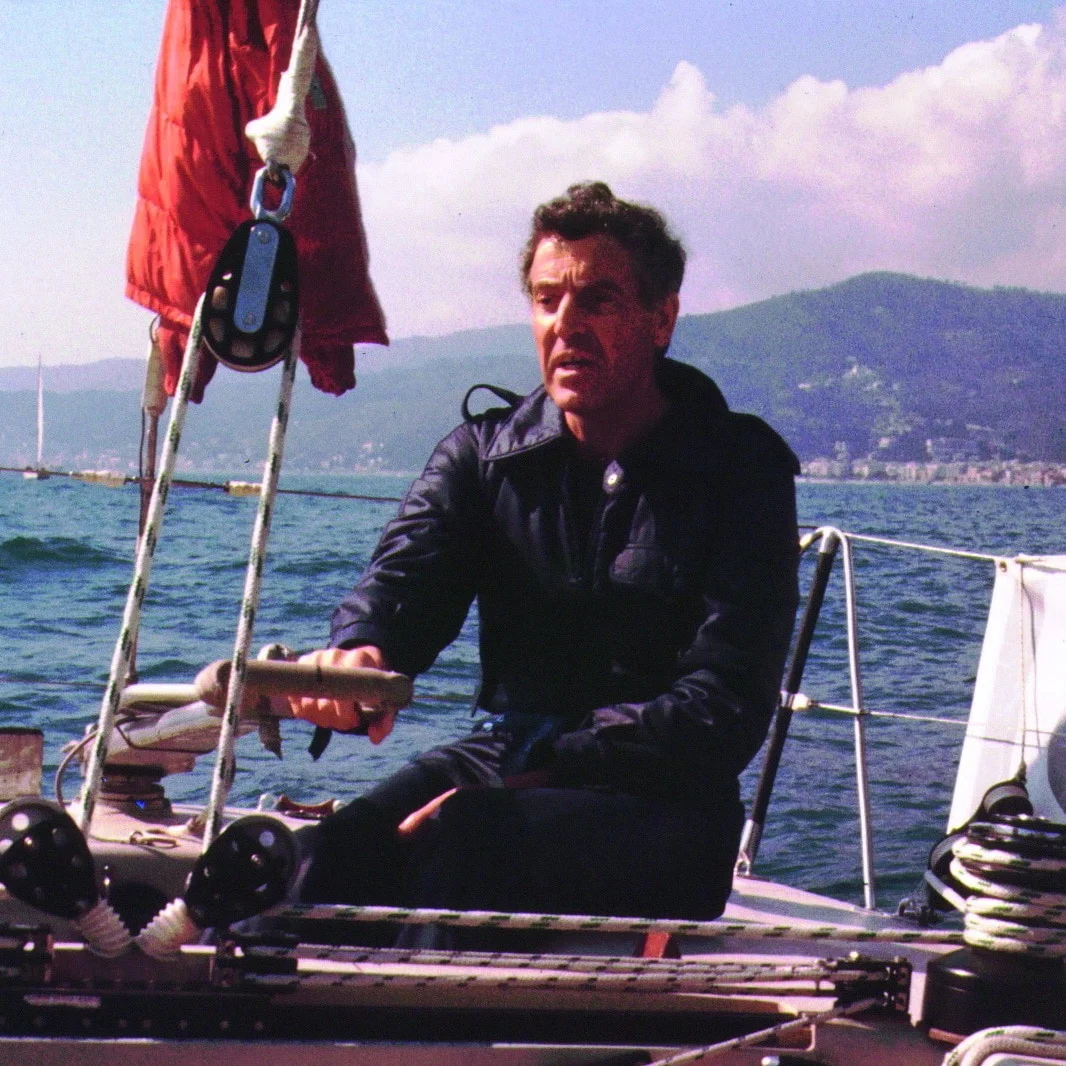
Willi Illbruck and Pinta
Although he subsequently became a national hero in his native Germany and a highly respected sailor on the international stage, Willi Illbruck had very little sailing experience when he first arrived at the Huisman yard in 1969 to discuss the purchase of a yacht. Wolter Huisman suggested the One Ton “Staron” design, a deal was struck, a yacht delivered and Wolter Huisman, together with his friend Eep Looman, went for an inaugural sail with the new client to show him the ropes.
From this small beginning, great things grew. Illbruck was soon infected by the racing bug and, with the experienced Eep Looman at his side, successfully competed in numerous North Sea and IJsselmeer races. By 1971 Willi was ready to move up a notch and asked Huisman’s to build him an S&S-designed 12.5 m / 41 ft Admiral’s Cupper. Illbruck’s determination and fast learning soon began to yield results, and he achieved wins in the Travemunde–Sandhamm, Flevorace and Houtrib races, a fourth place in the Channel Race and fi fth place overall in Cowes Week. The following year he won Cowes Week, came second in the Fastnet and North Sea races, and achieved third place in the Channel Race.
Illbruck was a formidable, yet charming, character and a highly successful entrepreneur. After his release as a Russian prisoner at the end of World War II, he began a small insulation business with his wife in 1952 – a business that grew to employ 3,500 people in twenty-five countries around the world. Wolter Huisman, always keen to learn from the entrepreneurs who became his customers, was full of admiration for the tidiness, organisation and good business practice that he saw at Illbruck’s headquarters. The two developed a close relationship.
As a skipper, Illbruck was exceptionally team-minded and focused on the best means of achieving success. He realised that ownership of Pinta did not automatically make him the best person to steer the boat; he always sought to play everyone in his team to the best of their talents, just as he did in business. At least five of his best employees regularly crewed on the current Pinta (the yachts never had a serial number) and his right-hand sailing man, Eep Looman, was recruited to work at Illbruck’s fast-growing industrial concern, where he ended up staying for the rest of his career. Illbruck always entered races in the name Team Pinta, so that recognition for success was shared among the entire crew.
Illbruck’s third and last Pinta to be built at Huisman was a 15.6 m / 51 ft Admiral’s Cupper, once again designed by Sparkman & Stephens. Launched in 1975, it was selected for the German Admiral’s Cup team that year, and they placed a creditable second. (Huisman built their second Saudade as a near-identical sister ship at the same time, but she did not make the Cup Team.) This third Pinta also won the SORC and came second in the Bermuda Race before she was sold and renamed Traite de Rome. Participating as the smallest yacht in the 1977–1978 Whitbread Round the World Race, she placed an impressive third. She also sailed in the 1981–1982 Whitbread, successfully completing another lap of the world, but was placed lower in the field.
In total, fifteen Pintas were built; the last one (campaigned by Willi’s son Michael) won the Volvo Ocean Race in 2002. Illbruck died in 2004 but his name lives on in sailing through the Willi Illbruck Racing Foundation.
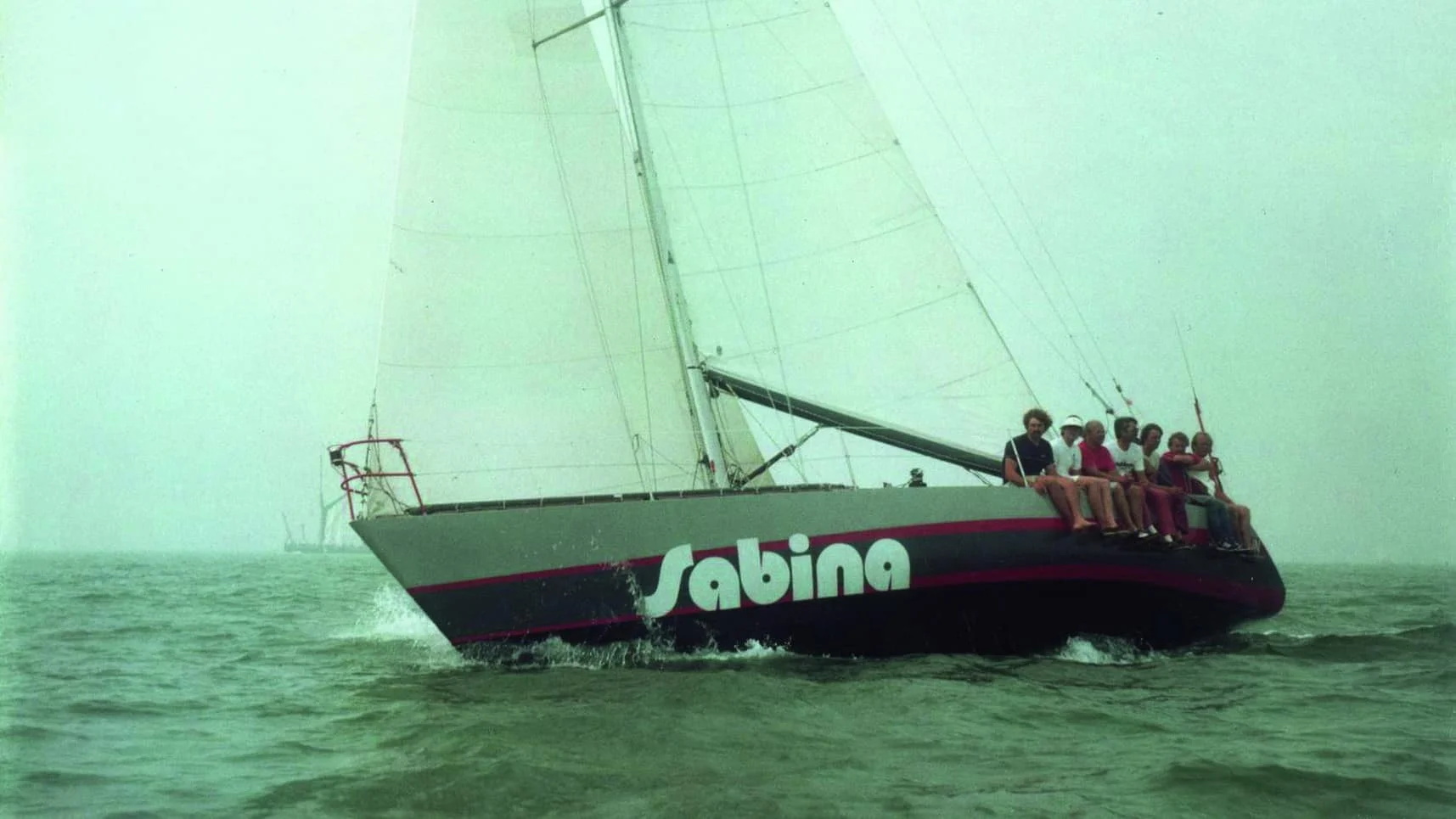
Hermann Noack and Sabina
Achievement in ocean racing was a talent shared by Willi Illbruck and Hermann Noack – so much so that in 1983 both Pinta and Sabina were selected for the German team to compete in that year’s Admiral’s Cup. They won convincingly, with Sabina the top points scorer in the event and Pinta just three points behind.
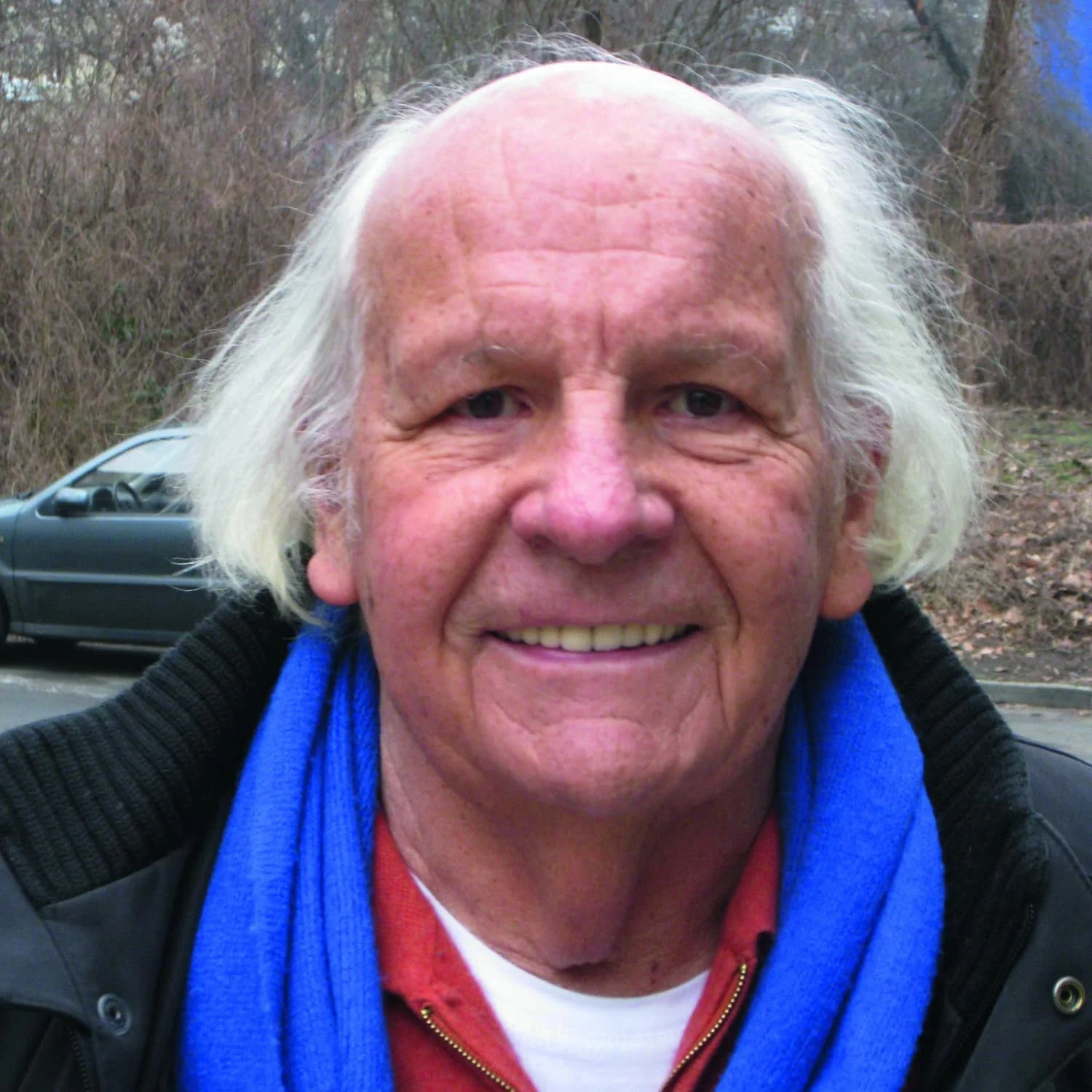
Artistic rather than pragmatic by nature, Hermann Noack enjoyed helming his Sabinas (which evidently he did very well) and was more than comfortable leaving the running of the yachts to his crew.
Noack acquired his first yacht, an 11 m / 36 ft steel Standfast, when he was just thirty years old. Subsequently he commissioned no fewer than five yachts from Huisman and raced them keenly. Sabinas II, III and IV were, respectively, Avenir, Rasbora and Staron designs from the board of Van de Stadt. They were built between 1965 and 1972. Wolter Huisman often sailed with Noack and, as ever, was useful aboard as both a sailor and a mechanic cum problem solver. Hermann recalls a wonderful anecdote:
“In the first years, Wolter still had enough time to go sailing, and so he was my teacher in seamanship. During my first extensive ocean regatta, Helgoland–Kiel in 1967, Wolter, with his calmness, stamina and ability, directed us safely through the sea when a storm broke out in the Skagerak.
At one stage, the deck started lifting under pressure from the halyard and to my alarm Wolter began sawing up the spinnaker pole. I asked him, ‘What on earth are you doing Mr Huisman?’ He quietly informed me that he would use the pole to brace the deck and that way we could carry on racing. He had no thoughts at all of retiring.
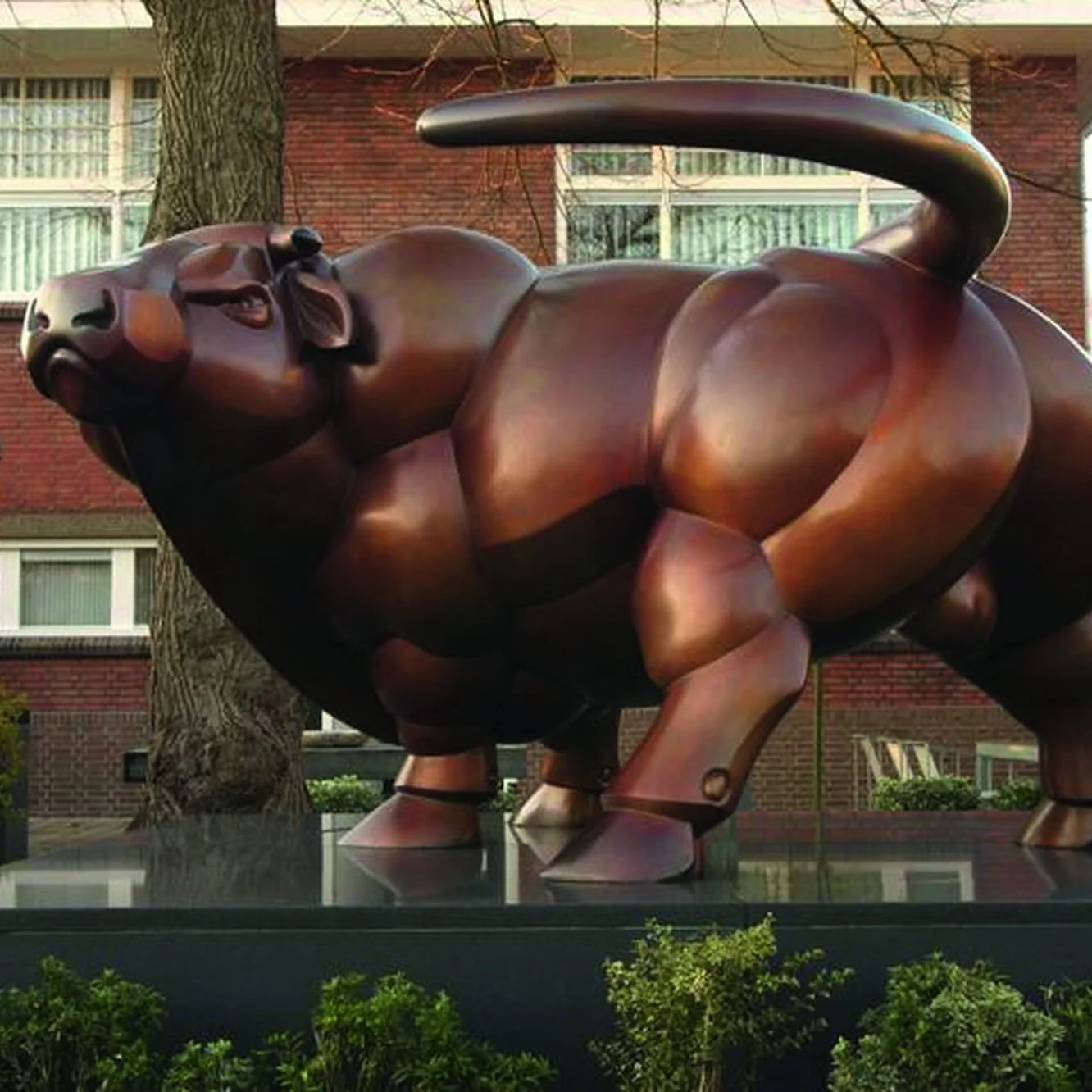
In many other respects, however, the two owners were remarkably distinct characters from very different backgrounds. Hermann Noack’s family business was a fine art foundry, casting and finishing bronzes for leading sculptors and public works. The business was established by his grandfather, Hermann Noack I, in 1897, but by the end of World War II, the factory had been partially destroyed and things were at a very low ebb.
The foundry’s fortunes gradually began to improve as orders came in for the post-war restoration of important monumental bronzes that had been damaged during the war. The real breakthrough, however, was the long-term artistic collaboration established between Sabina’s owner and the renowned sculptor Henry Moore, which made the foundry internationally famous.
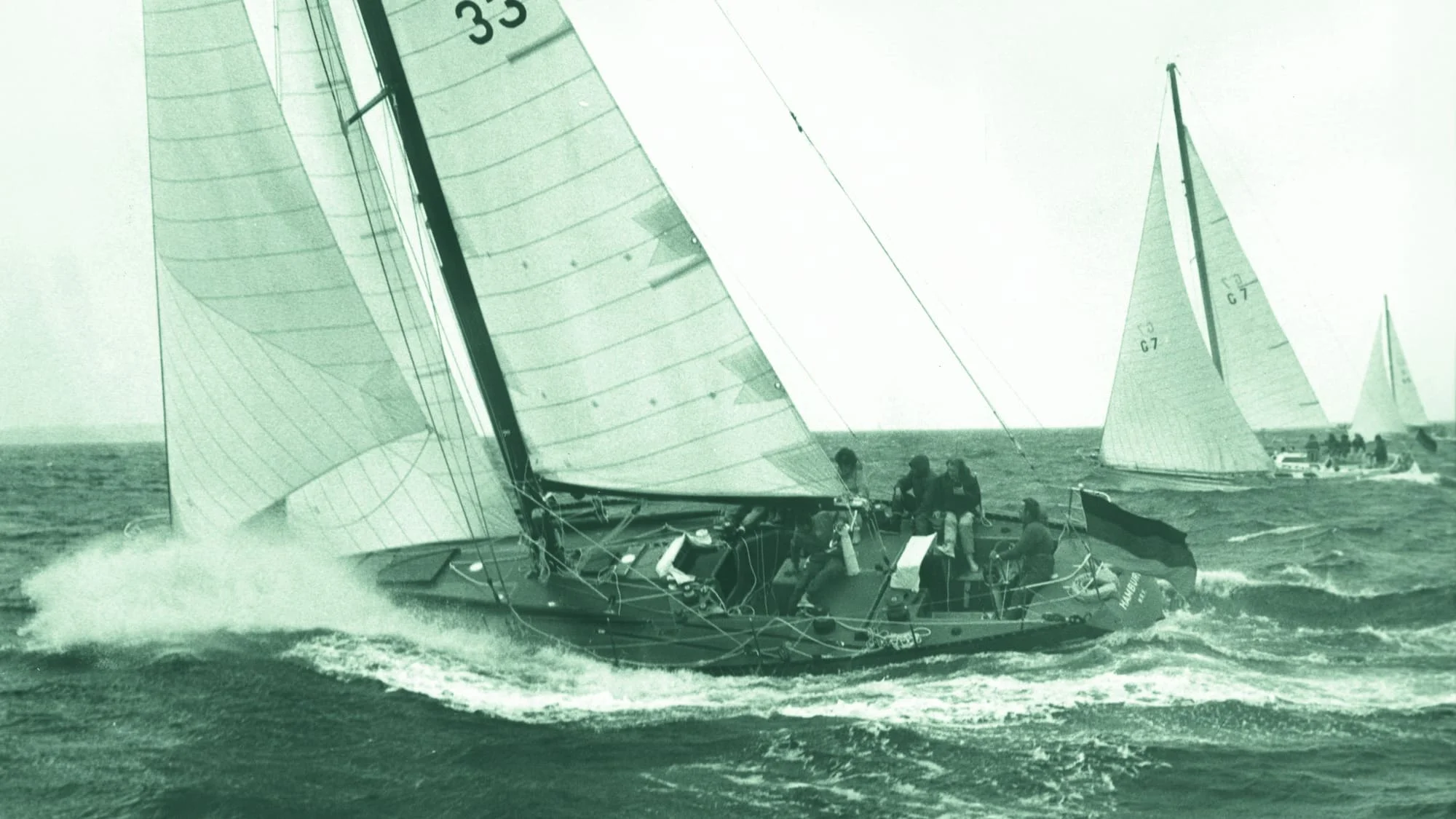
Artistic rather than pragmatic by nature, Hermann Noack enjoyed helming his Sabinas (which evidently he did very well) and was more than comfortable leaving the running of the yachts to his crew.
Noack acquired his first yacht, an 11 m / 36 ft steel Standfast, when he was just thirty years old. Subsequently he commissioned no fewer than five yachts from Huisman and raced them keenly. Sabinas II, III and IV were, respectively, Avenir, Rasbora and Staron designs from the board of Van de Stadt. They were built between 1965 and 1972. Wolter Huisman often sailed with Noack and, as ever, was useful aboard as both a sailor and a mechanic cum problem solver. Hermann recalls a wonderful anecdote:
“In the first years, Wolter still had enough time to go sailing, and so he was my teacher in seamanship. During my first extensive ocean regatta, Helgoland–Kiel in 1967, Wolter, with his calmness, stamina and ability, directed us safely through the sea when a storm broke out in the Skagerak.
At one stage, the deck started lifting under pressure from the halyard and to my alarm Wolter began sawing up the spinnaker pole. I asked him, ‘What on earth are you doing Mr Huisman?’ He quietly informed me that he would use the pole to brace the deck and that way we could carry on racing. He had no thoughts at all of retiring.
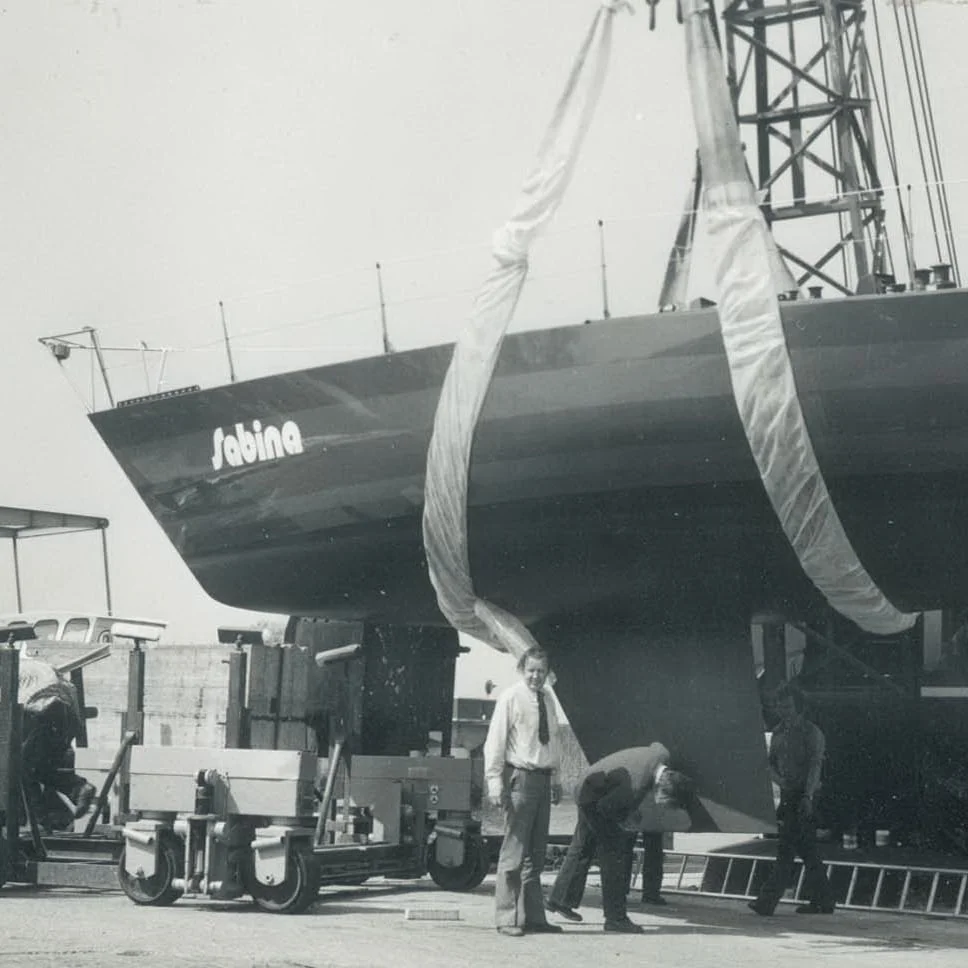
One particular sentence which Wolter coined during that trip has accompanied me throughout my whole life. When we were sailing hard against the wind with the jib only and the waves sweeping over the deck close to the Danish coast, he said: ‘Those poor people on land.’” 1976 saw the launch of Noack’s first fully custom racer, Sabina V, an 11 m / 36 ft one-tonner designed by Jac de Ridder, the up-and-coming naval architect who had received an invaluable apprenticeship under Van de Stadt, Rod Stephens and, of course, Wolter Huisman.
One success led to another, but, as was the way of IOR racing, Hermann Noack recognised that there was only so long he could campaign a boat and remain competitive: you had to move on. Jac de Ridder was retained once more to design a final racing yacht to be built at Huisman before the yard turned its attentions in a new direction.
The 12.1 m / 40 ft one-tonner, Sabina VI, was launched from Vollenhove in 1981 and, while the Huisman yard embarked on its new journey into luxury cruising yachts, Hermann Noack concentrated his bearings on even greater racing success, which he continued to achieve with the 1983 Admiral’s Cup and well beyond.
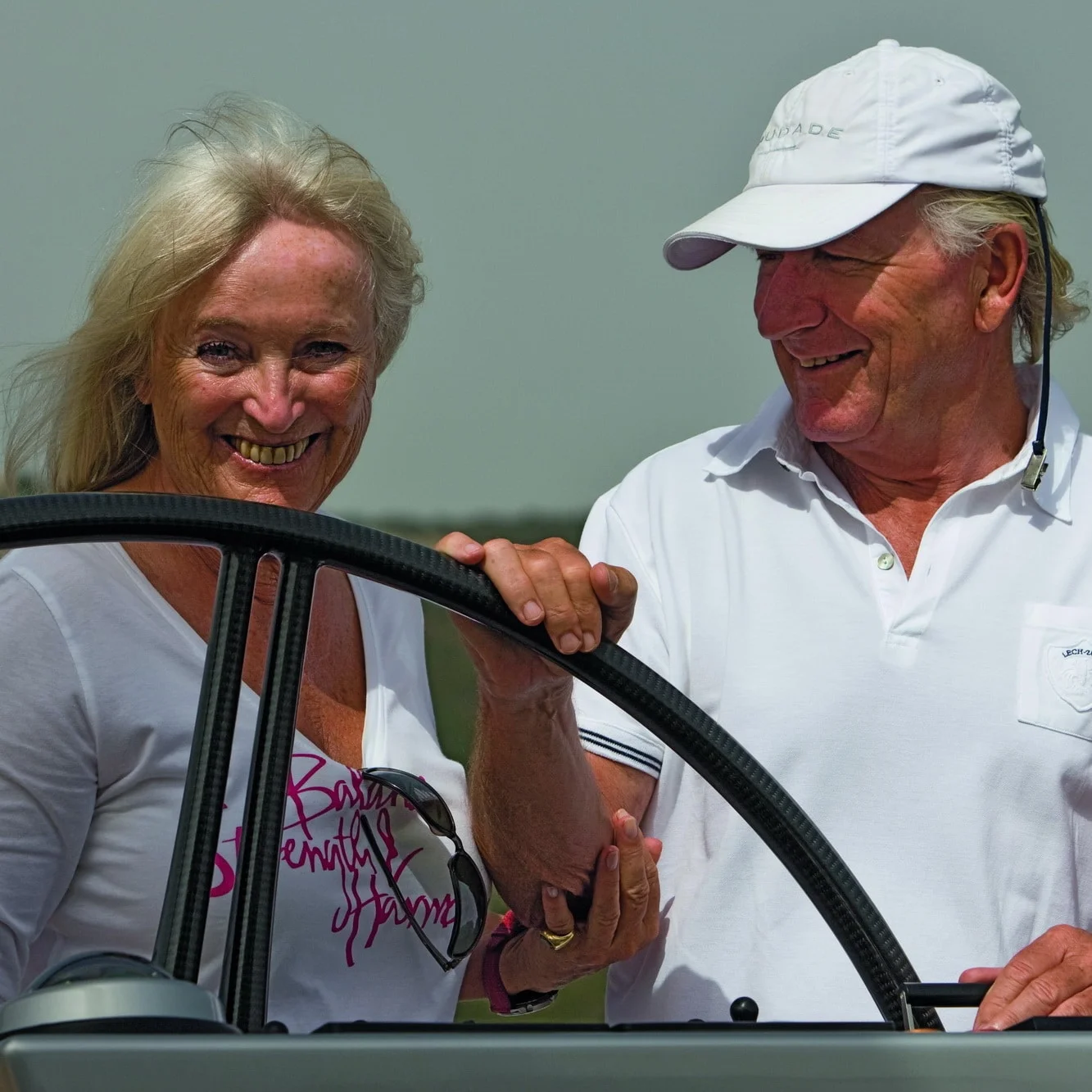
Albert Büll and Saudade
Saudade and her hard-driving owner, Albert Büll, became household names in Germany when the German team decisively seized the Admiral’s Cup from the British holders in 1973. Saudade was the top-scoring yacht in an impressive team during demanding racing conditions.
A citizen of Hamburg, Albert Büll has always demanded exceptional standards of achievement – from himself and from those around him, too. He built up a successful real estate business in his native city and applied the same strong organisational skills, and a willingness to take bold decisions, to his parallel career in off shore racing. He prides himself in recognising and deploying talented people and his 1973 Admiral’s Cup Team comprised many high-fliers, including the champion Finn helmsman Berend (Benny) Beilken.
Büll is an outstanding helm and very much “one of the team” when racing, although the crew members are never in doubt as to who ultimately calls the shots.
By 1975, Büll had built a second larger (15.6 m / 51 ft) Saudade at Vollenhove, alongside Pinta, a Sparkman & Stephens sister ship, the aim being to optimise the two together on the water. This Saudade did not make the Admiral’s Cup Team (as Pinta did), but nevertheless she made her mark around the regattas, again with a strong crew including the ubiquitous Jens Cornelsen.
In a long racing career, Albert Büll continued to compete at the highest level internationally, achieving numerous wins. These included the 1983 Middle Sea Race and selection for the German Admiral’s Cup Team in 1987, fourteen years after he fi rst represented his country in this event.
Progressing from all-out racing to high-performance cruising, Albert Büll asked Judel & Vrolijk to design him a fast 34.3 m / 112 ft luxury yacht to be built once more at the Royal Huisman yard. She was launched in 1994. More recently, in 2008, Büll took delivery of a very light displacement, 45 m / 148 ft composite sloop for super-slippery ocean cruising and superyacht regattas. It seems the racing flame still burns brightly.
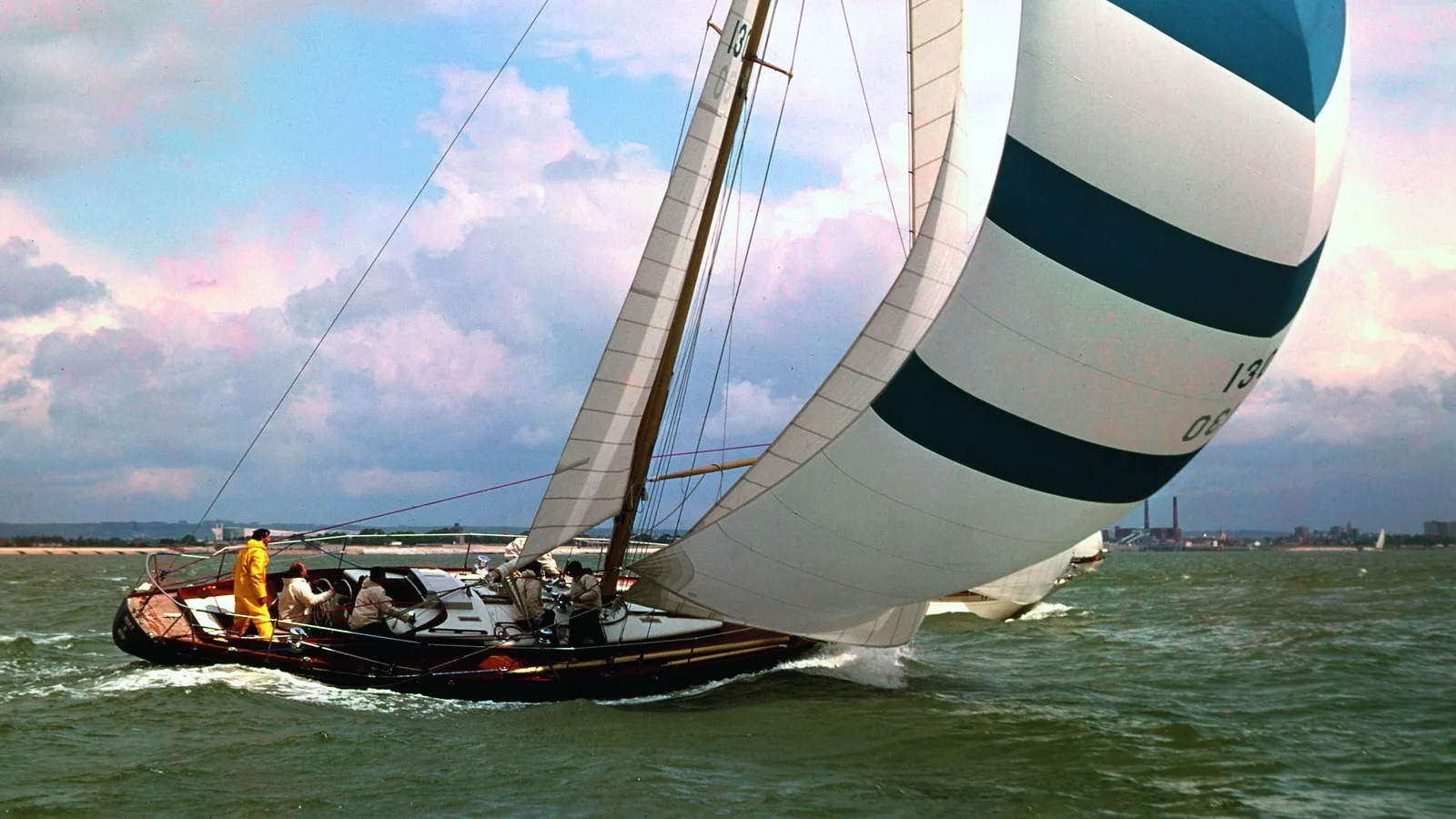
Arthur Slater and Prospect of Whitby
“Larger than life” is a term that is often associated with racing yacht owners, but few can have merited this description more perfectly than Arthur Slater.
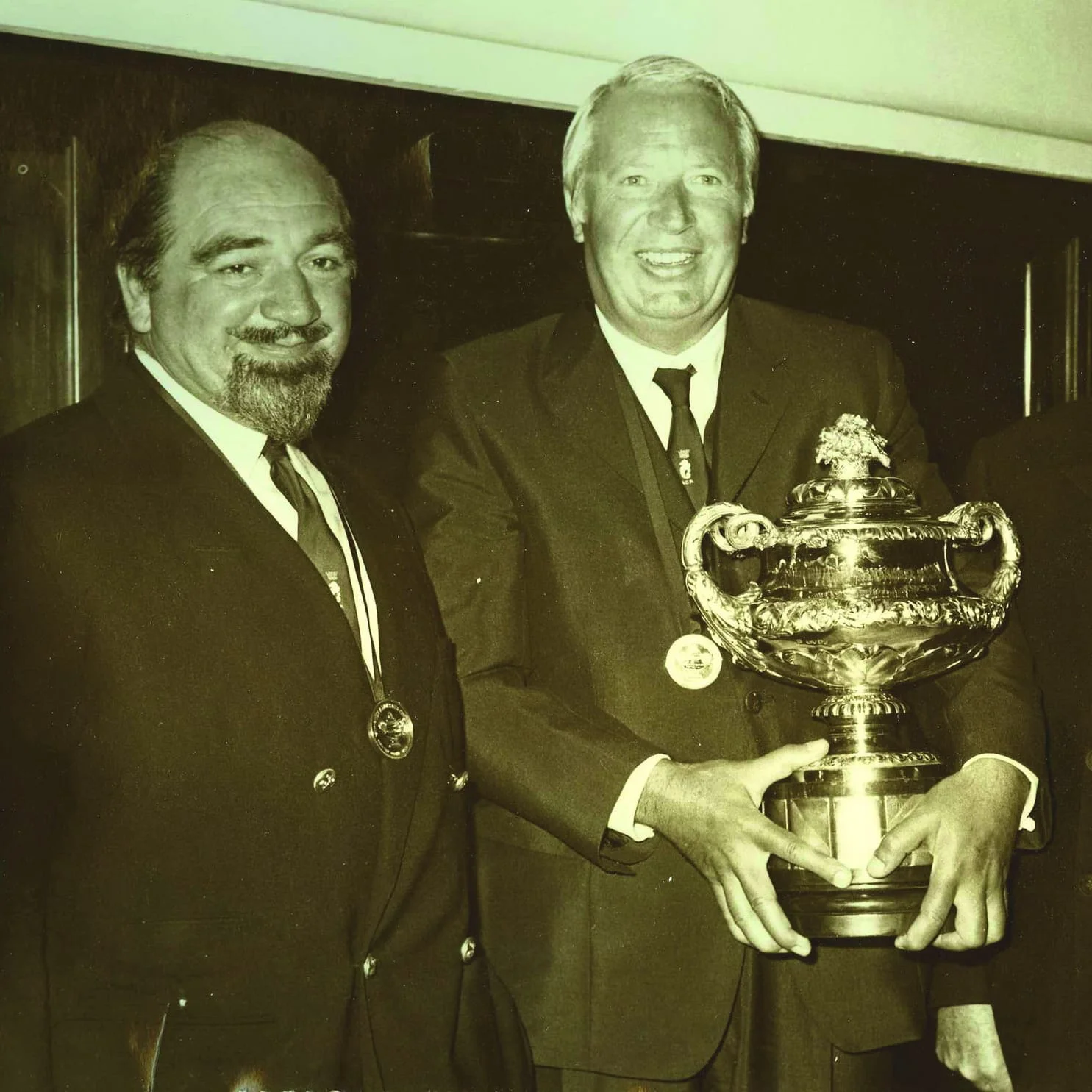
An Englishman with an intense competitive spirit, Slater was originally a keen rally driver – a pursuit he may have continued indefinitely, greatly to the detriment of ocean racing, had he not lost a leg competing in the Monte Carlo Rally in the 1950s. Recognising that he would have to find a new sport that was no less competitive but did not demand the possession of two legs, he alighted upon ocean racing. Lesser mortals no doubt whispered to him that, at sea, it can be hard enough to stand even when able bodied. Slater would have none of it. Although fitted with a false leg, he never wore it at sea and famously warned new crew members that if they attempted to help him up after a fall, even in heavy weather, they were off the boat. And he meant it.
With a specially developed bucket swivel seat fixed to the cockpit floor, Slater became one of the top ocean racing helmsmen of his era. He built three of his famous Prospect of Whitby series of yachts with Huisman between 1971 and 1975, all Sparkman & Stephens designs, and enjoyed exceptional success. He represented his country to great effect in the Admiral’s Cup in 1967, 1969 and 1971 (winning the Cup in 1971 on his new Huisman-built 13.7 m / 45 ft yacht in company with Morning Cloud and Cervantes IV); in the Onion Patch in 1968, 1970 and 1972; and in the Southern Cross Series in 1969, 1971 and 1973.
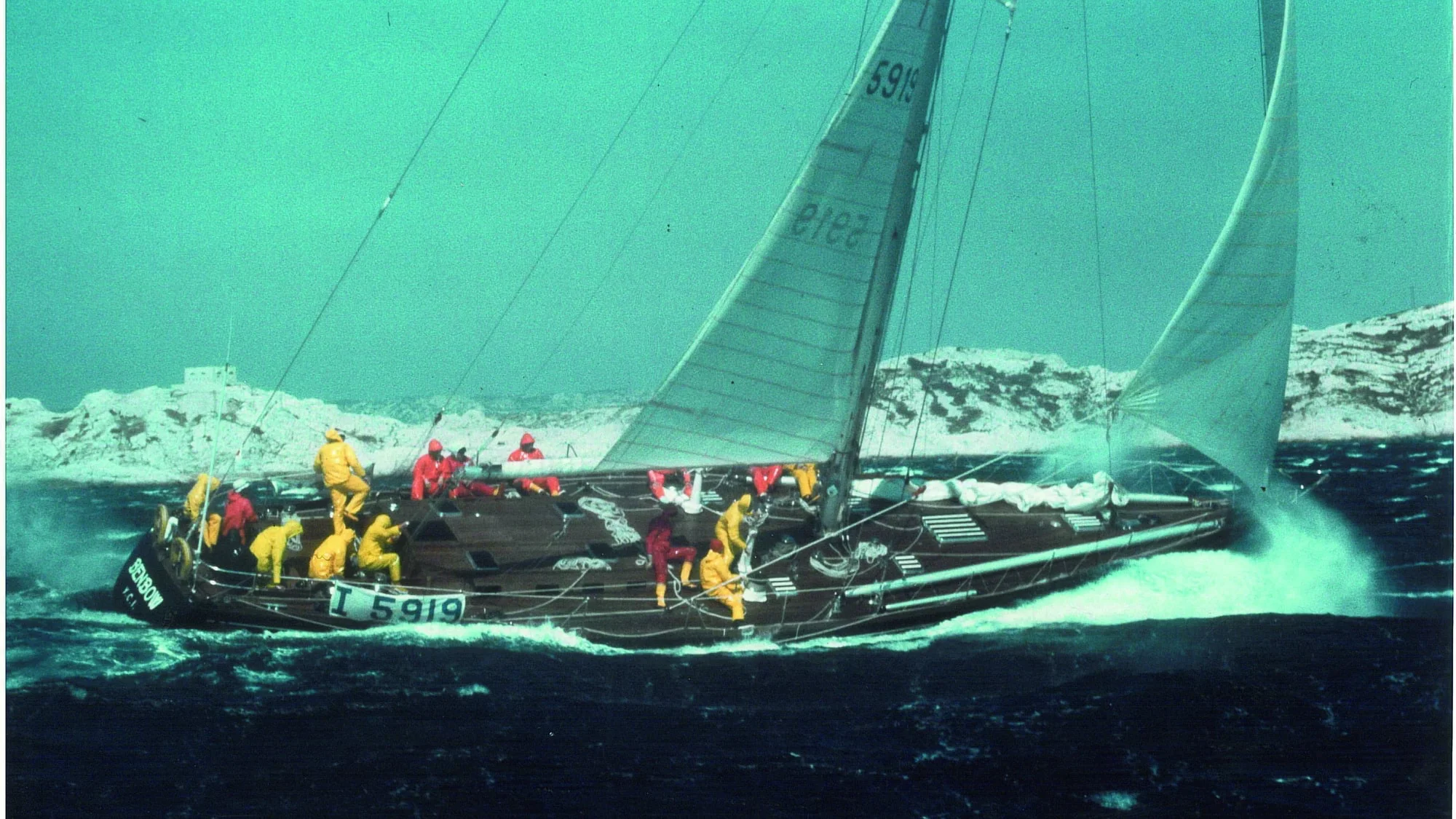
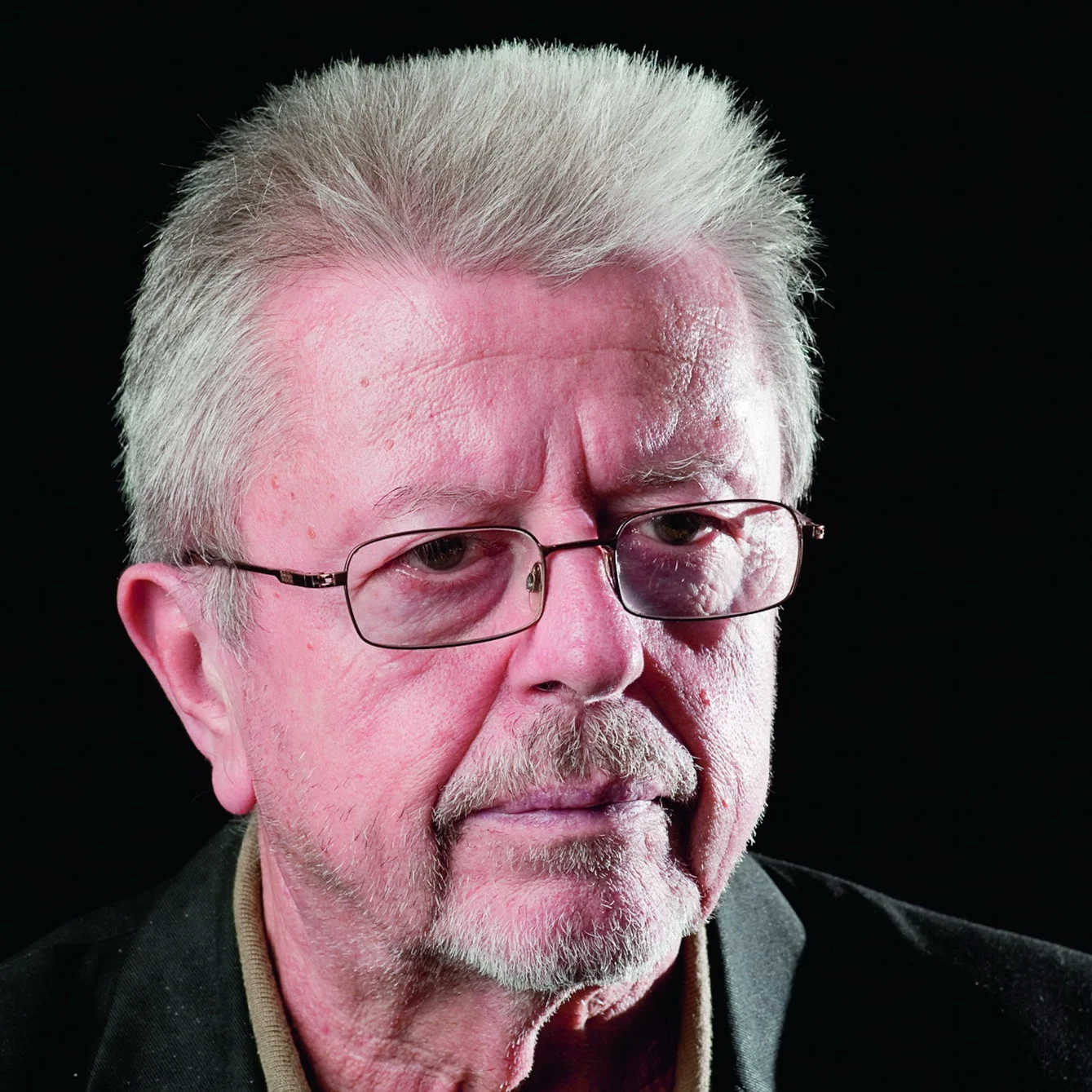
More movers and shakers
Spirit of Delft, a 13.4 m / 44 ft Admiral’s Cupper designed by Jac de Ridder and launched in 1973 is noteworthy because her owner, Willem Oosterwijk, enjoyed a close friendship with, and regular crewing from, Wolter Huisman over a period of twelve years. Many top sailors and designers made guest crew appearances aboard this actively campaigned yacht thanks to Wolter’s wide connections. Among many successes, she won Cowes Week in 1974.
The highly effective and good-humoured Scottish sailor Ron Amey had ten yachts called Noryema (no prizes for sourcing the origin of the name) and constructed the 16 m / 52 ft Sparkman & Stephens-designed Noryema IX at Huisman.
She qualified as a British team member for the Onion Patch Series in 1974, achieving second place; she was also a reserve for the 1973 Admiral’s Cup Team.
The Jean-Marie Finot-designed Revolution, built in 1972 for Jean-Louis Fabry, had the extraordinary distinction of sailing in the French Admiral’s Cup Team no fewer than four times: in 1973, 1975, 1977 and 1979 – almost certainly a record unrivalled by any other boat or crew. One of the first ever yachts designed on a CAD system (on a computer rather than on paper), she turned in an “astounding” individual boat performance at her first Admiral’s Cup: “Revolution … was appropriately named … few on seeing her would have predicted her astonishing future,” commented Bob Fisher in his official history of the Admiral’s Cup.
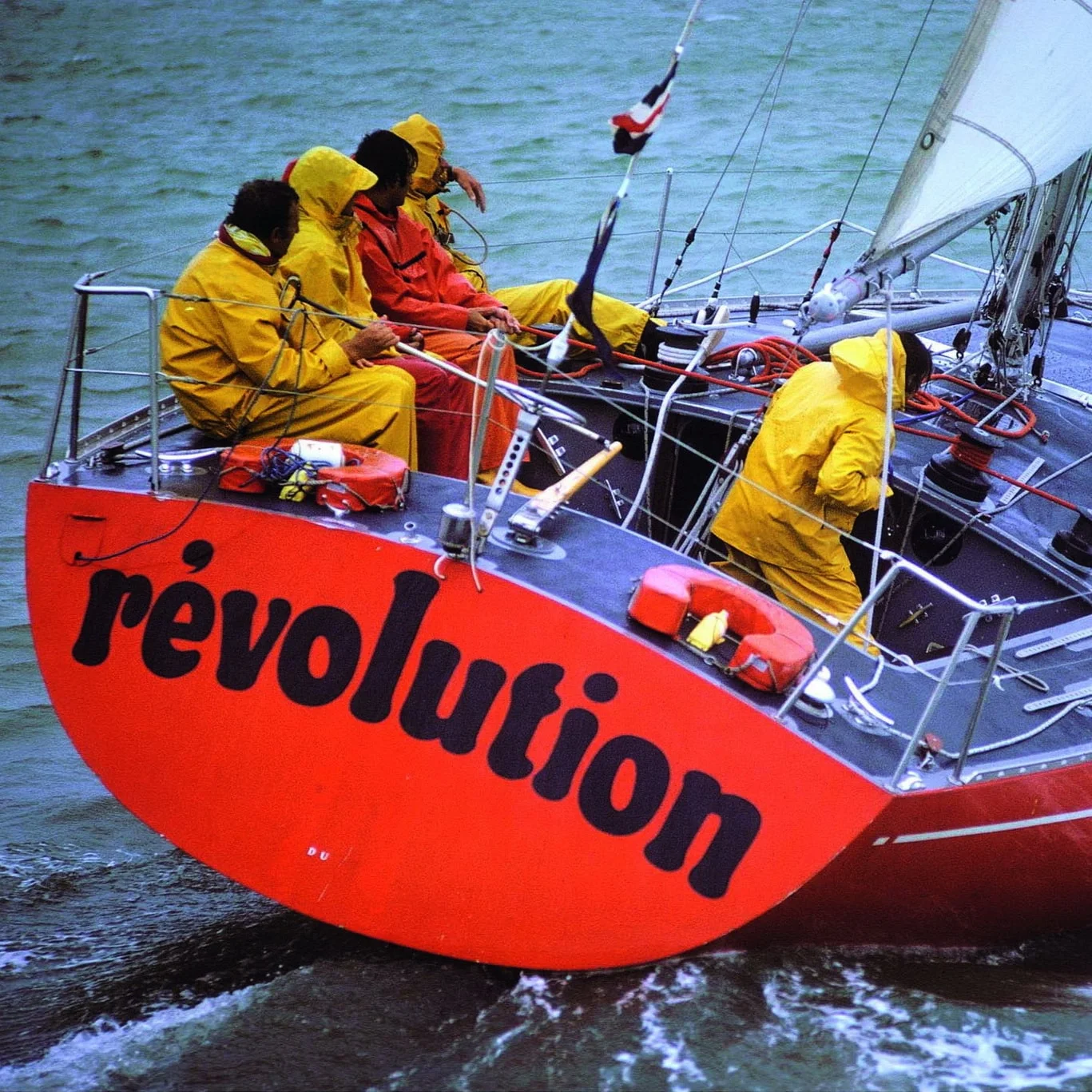
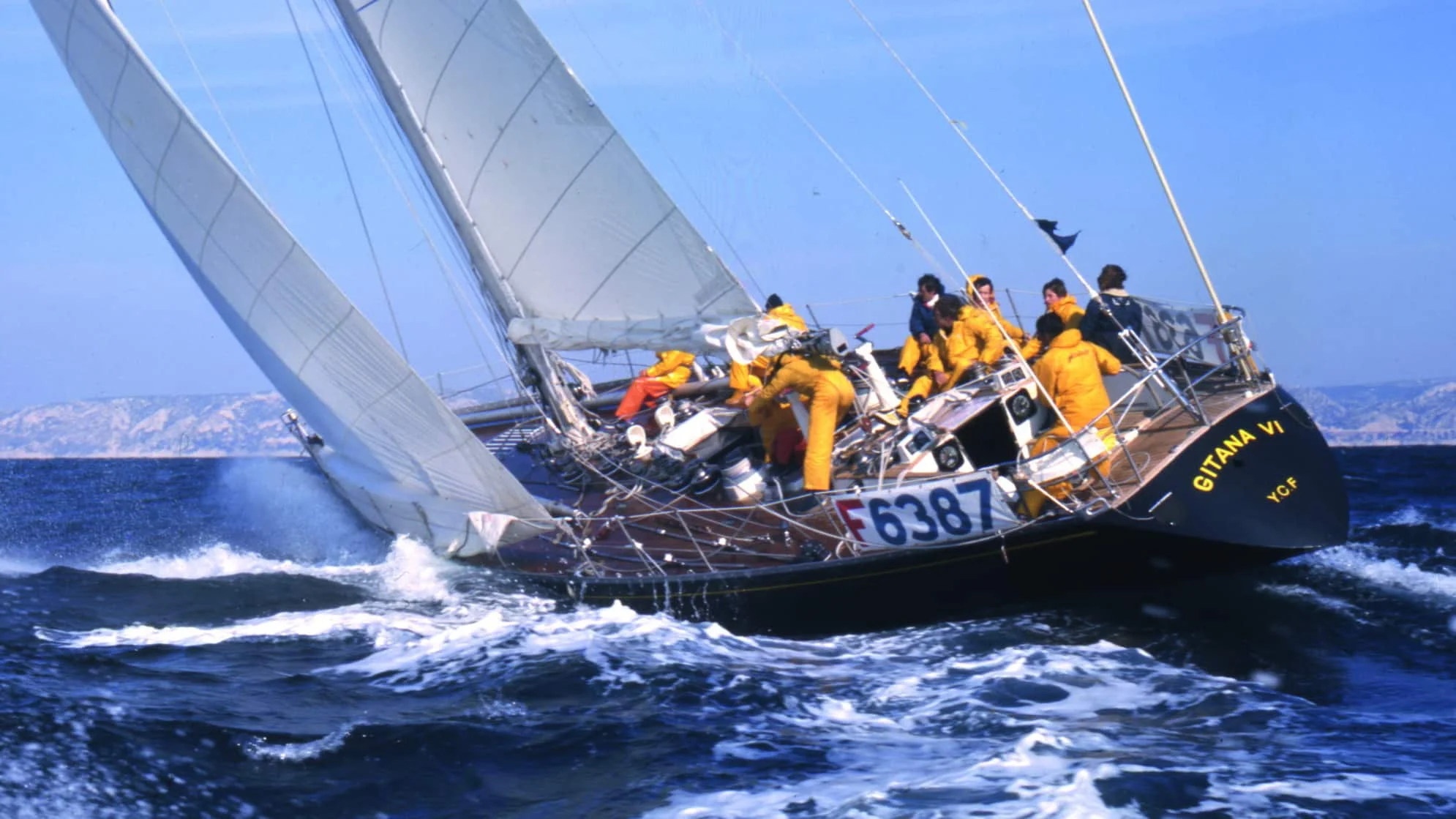
Mandrake, a Sparkman & Stephens 14.7 m / 48 ft Admiral’s Cupper designed for Italian G. Carriero, was launched in 1974 and won the Rolex Middle Sea Race the same year. She made the Italian Admiral’s Cup Team in 1975. Sumbra IV, a 10.8 m / 35 ft Peterson design for owner Max Boris, achieved similar almost instant gratification by winning the Rolex Middle Sea Race in the same year she took to the water, in this case 1976.
A great compliment
The orders for Winsome (Sparkman & Stephens Admiral’s Cupper, 1972) and Winsome Gold (Dubois two-tonner, 1979) for highly competitive sailor David (Daisy) May were a great compliment to the Huisman yard, given that May’s family owned the respected Berthon Boat Yard in Lymington, England. Naturally enough, the hulls were fitted out at Berthon. Campaigned with David May’s customary vigour, both yachts enjoyed a fair share of success.
The Germán Frers-designed Emeraude was selected for the French Admiral’s Cup Team in 1977, campaigning alongside Jean-Louis Fabry’s Revolution to boost still further the number of Huisman-built yachts that competed at the highest level of offshore sailing in their time.
And finally … an amusing (and revealing) tailpiece. The illustrious Rothschild family was well known for its Gitana racing yachts and Huisman was awarded the contract to build the 20 m /66 ft Sparkman & Stephens-designed Gitana VI for the 1975 Admiral’s Cup. When Mr Edmond de Rothschild visited to the yard to inspect his yacht, Wolter Huisman took him to the best local restaurant, Seidel, for dinner. Naturally enough, Huisman briefed the proprietor in advance about his distinguished guest but warned him that he must serve house wine – on no account could the yard afford a Rothschild wine. When the restaurant owner came to the table and served a bottle of extremely fine vintage Rothschild wine, Huisman almost choked. With a large smile on his face, the proprietor said: “It is such an honour to have you in my restaurant, M. de Rothschild, the wine is on the house tonight.”
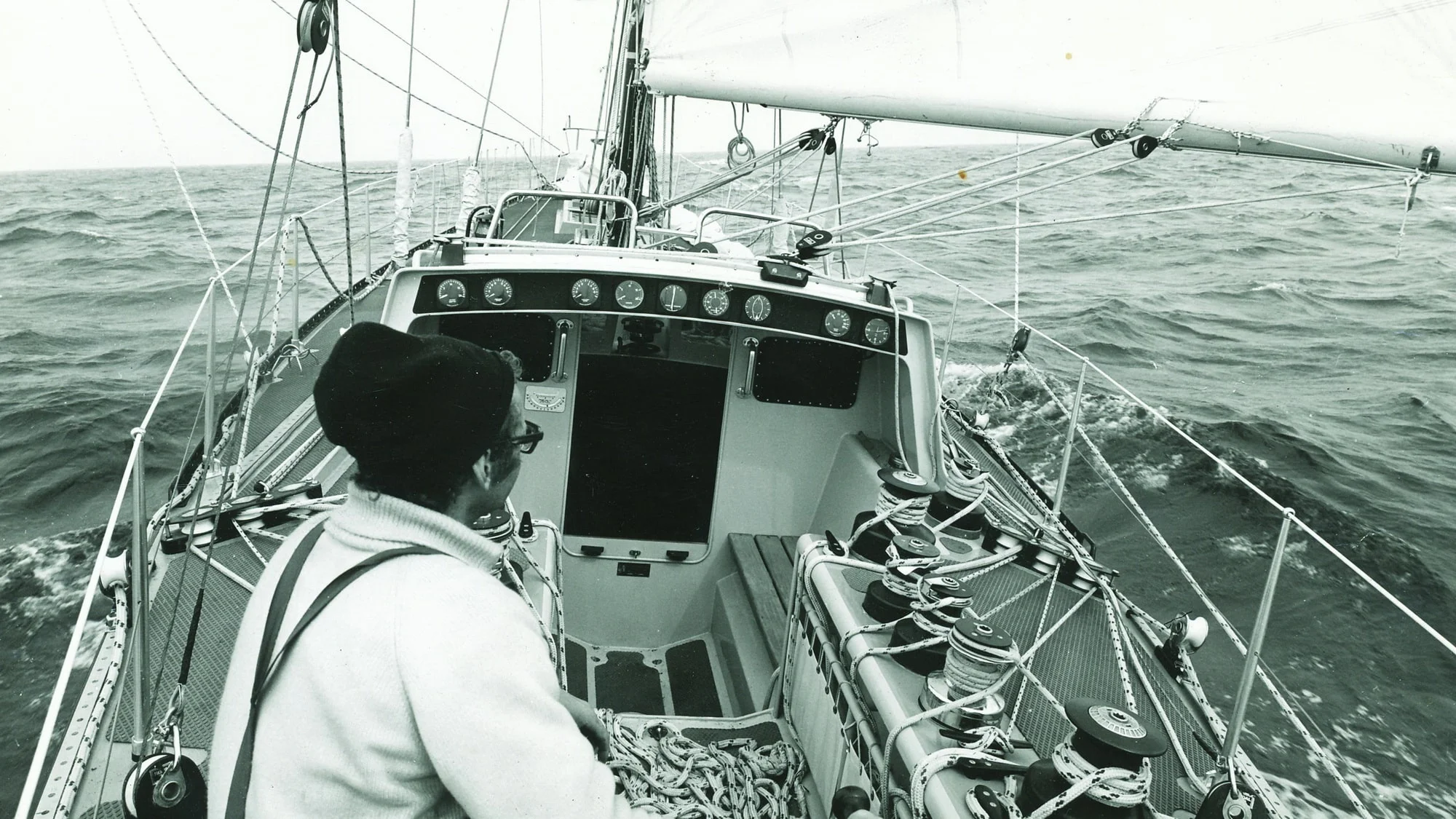
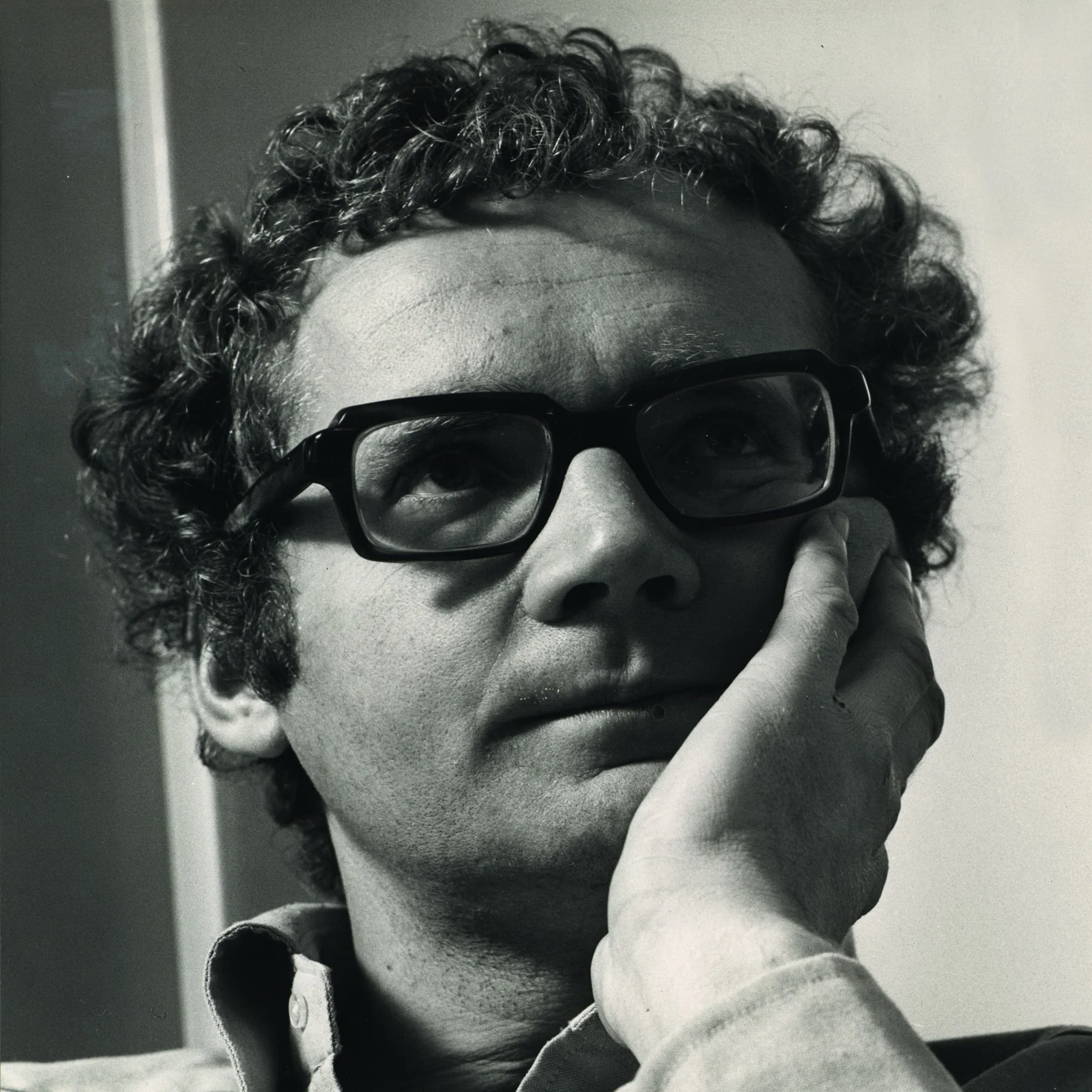
The OSTAR Challenger
“Five low pressure systems followed each other one after the other, relentlessly generating an average wind speed of 35 knots and a raging, chaotic, short, crossed sea for over a week. The fleet were decimated with the well-chronicled retirement of Yvon Fauconnier (ITT Oceanic previously Vendredi 13) and the break-up of Jean- Yves Terlain’s 70ft catamaran Kriter II. Two skippers were lost at sea in the storms – only 73 of the 125 starters finished the race within the time limit.”
This dramatic description of the 1976 OSTAR (Single- Handed Trans-Atlantic Race) from race organisers Royal Western Yacht Club in Plymouth paints a compelling picture of the punishment Gerard Dijkstra’s Huisman-built Bestevaer was to take in the 1976 edition of this classic race.
As an ambitious young sailor, Dijkstra had already entered the 1972 OSTAR aboard the 25 m / 83 ft Van de Stadt-designed Second Life but had been forced to retire when dismasted. Determined to finish the business he had begun, Dijkstra designed his own entry, the 16.4 m / 53 ft Bestevaer, for the next race and, after energetic fund-raising eff orts, was able to have her built at the Huisman yard.
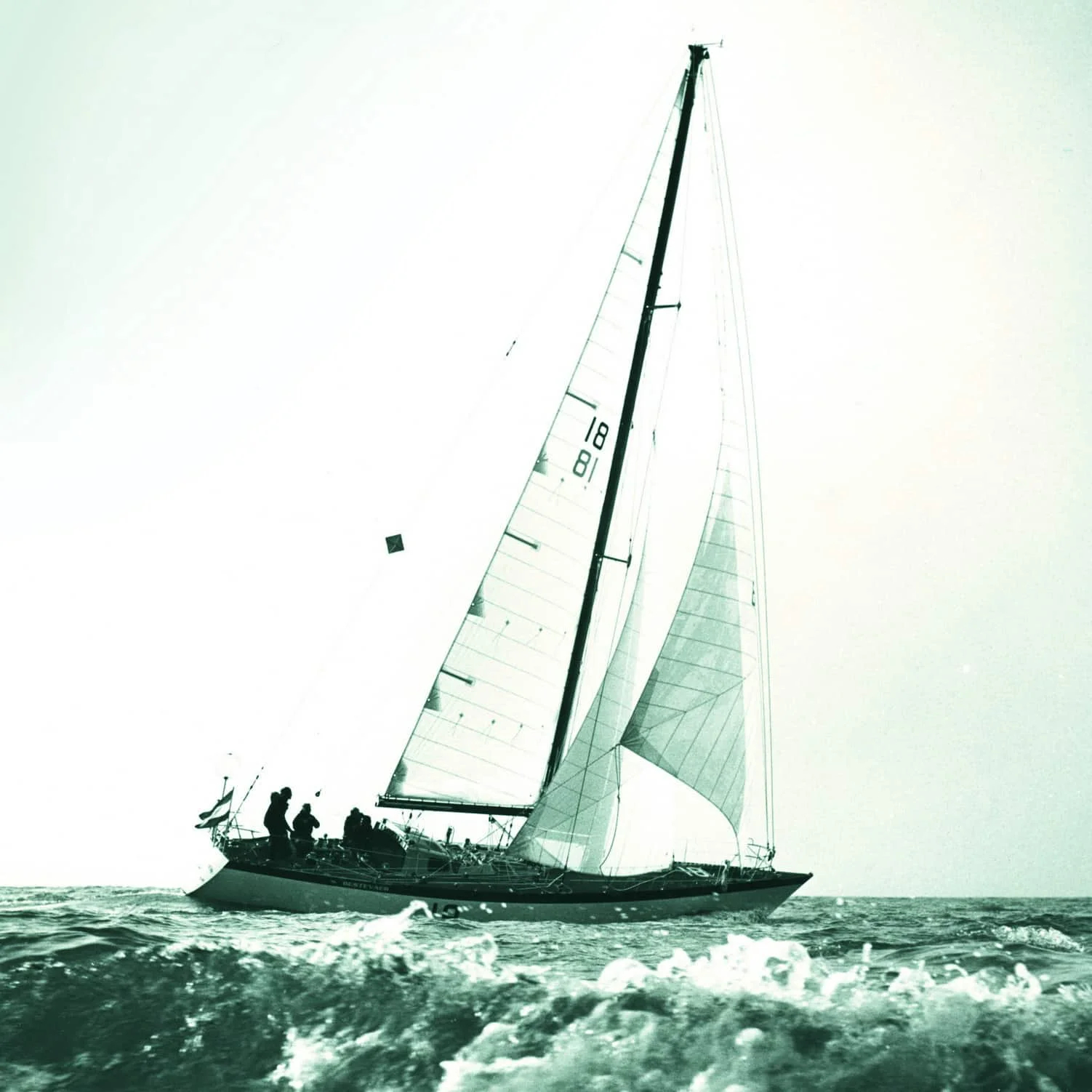
To this day Gerard Dijkstra recalls the two weeks he spent on his knees on the yard floor lofting the hull (drawing full-sized lines to create templates for the hull frames) – things have certainly changed over the decades!
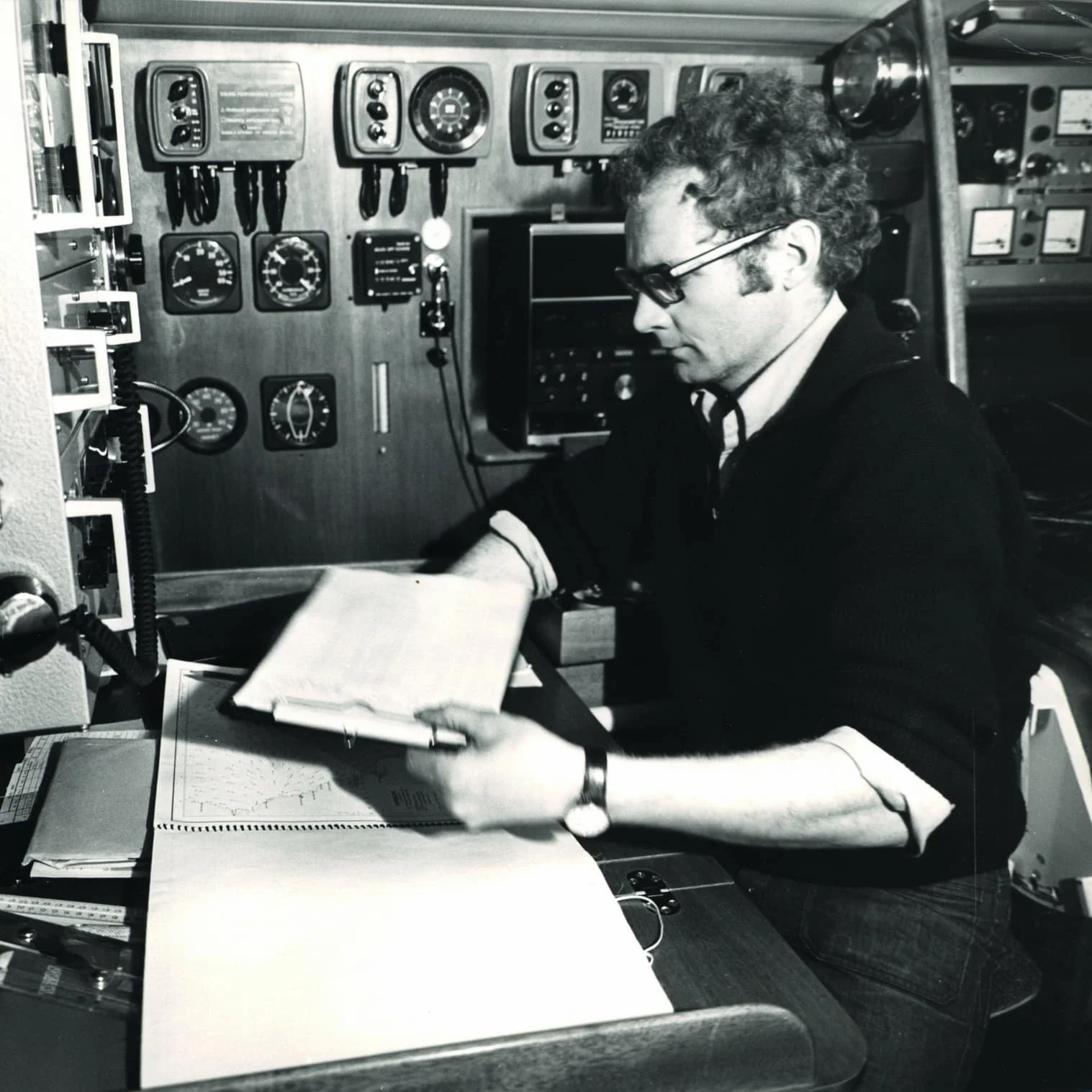
Despite the dreadful wind and sea conditions at the start of the 1976 race, Dijkstra made fast progress. However, closing down towards Newfoundland he could no longer ignore the warning signs of mast distortion as a result of the constant slamming into short steep seas. With a heavy heart, but steely commitment, he turned back for Plymouth and repairs.
With a Huisman team on standby, the mast was unshipped, repaired, re-stepped and redressed in short order and an exhausted Dijkstra powered off once more to the west. It is to Dijkstra’s great credit that he completed the race within the time limit (only half the fleet did, yet Bestevaer and Dijkstra sailed twice the distance),
and equally impressive that Bestevaer was in line for a fastest monohull crossing time before he turned back. Dijkstra went on to campaign Bestevaer with another young sailor who was destined for great things, Olivier de Kersauson. They sailed her as Kriter VI in the Transat en Double and the Two Star; De Kersauson subsequently sailed her solo in the 1980 OSTAR and she has continued to race and cruise successfully over the past three decades, clocking up many, many thousands of ocean miles and still going strong.
Continue reading about the racing years on this website > inhuis stories & updates:
This article was first published in the book “Royal Huisman 125 years The Spirit of Individuality”. Return to part 1 – Ready about! – The racing years: link
